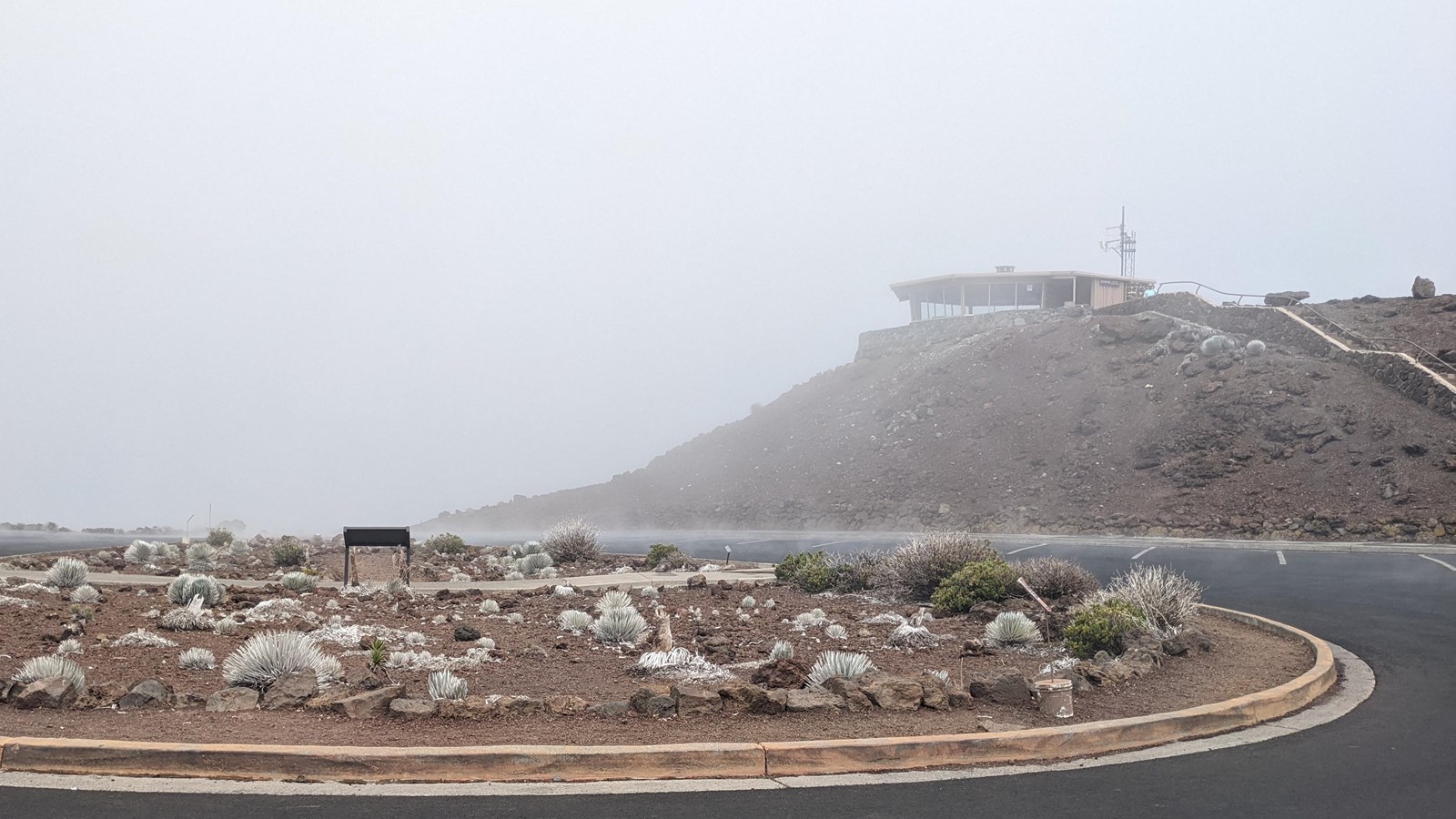Last updated: June 13, 2022
Place
Puʻuʻulaʻula Overlook

NPS Photo
Quick Facts
Location:
Summit District
Significance:
Stop 5 on the Geology Road Tour
Amenities
2 listed
Parking - Auto, Scenic View/Photo Spot
Take a moment to catch your breath as you walk around this summit parking lot. The air is thinner up here – that means there’s far less oxygen in the atmosphere at this elevation! Some of the air you’re breathing is present because of the gas bubbles you saw in the lava flows below. A rich atmosphere is just one of the contributions that volcanoes make to our planet. Eruptions like the one you’re standing on produce materials that are necessary for the bodies we have, the life the planet sustains, and the technology that humans have created.
Active volcanoes enrich the atmosphere with water vapor, carbon dioxide, sulfur dioxide, and many other gases. They create new land and bring essential elements to the surface. On a clear day, looking for the large mountainous silhouette in the distance, you can see the impact of that shield-building process still in action on Hawai‘i Island.
The two tallest peaks of the Big Island are some of the most massive mountains on the planet, underwater volume included - Mauna Kea (13,800’) and Mauna Loa (13,700’). It’s important to learn and use those Hawaiian names! They hold cultural significance and are often descriptive. Here we see Mauna (mountain) Kea (white) and Mauna (mountain) Loa (long). The taller and steeper peak of Mauna Kea is often capped with snow in winter, visibly a “white mountain” even from this distance. Mauna Loa is indeed a “long mountain” with a more gradual profile. The difference in their distinct shapes is tied to the fact that Mauna Kea is older – its eruptions have become increasingly explosive over time as the magma in its reservoir slowly crystallizes, degasses, and becomes more viscous.
Even though volcanoes like Mauna Loa, Mauna Kea, and Haleakalā are incredibly massive and have been active for a very long time, they can’t hold a candle to humanity’s greenhouse gas output. Industrial systems and global burning of fossil fuels emit a Mount St. Helens-sized eruption of CO2 every 2.5 hours! Climate change driven by anthropogenic greenhouse gas emissions poses a greater threat to the life, culture, and history here than any future eruption.
Active volcanoes enrich the atmosphere with water vapor, carbon dioxide, sulfur dioxide, and many other gases. They create new land and bring essential elements to the surface. On a clear day, looking for the large mountainous silhouette in the distance, you can see the impact of that shield-building process still in action on Hawai‘i Island.
The two tallest peaks of the Big Island are some of the most massive mountains on the planet, underwater volume included - Mauna Kea (13,800’) and Mauna Loa (13,700’). It’s important to learn and use those Hawaiian names! They hold cultural significance and are often descriptive. Here we see Mauna (mountain) Kea (white) and Mauna (mountain) Loa (long). The taller and steeper peak of Mauna Kea is often capped with snow in winter, visibly a “white mountain” even from this distance. Mauna Loa is indeed a “long mountain” with a more gradual profile. The difference in their distinct shapes is tied to the fact that Mauna Kea is older – its eruptions have become increasingly explosive over time as the magma in its reservoir slowly crystallizes, degasses, and becomes more viscous.
Even though volcanoes like Mauna Loa, Mauna Kea, and Haleakalā are incredibly massive and have been active for a very long time, they can’t hold a candle to humanity’s greenhouse gas output. Industrial systems and global burning of fossil fuels emit a Mount St. Helens-sized eruption of CO2 every 2.5 hours! Climate change driven by anthropogenic greenhouse gas emissions poses a greater threat to the life, culture, and history here than any future eruption.
